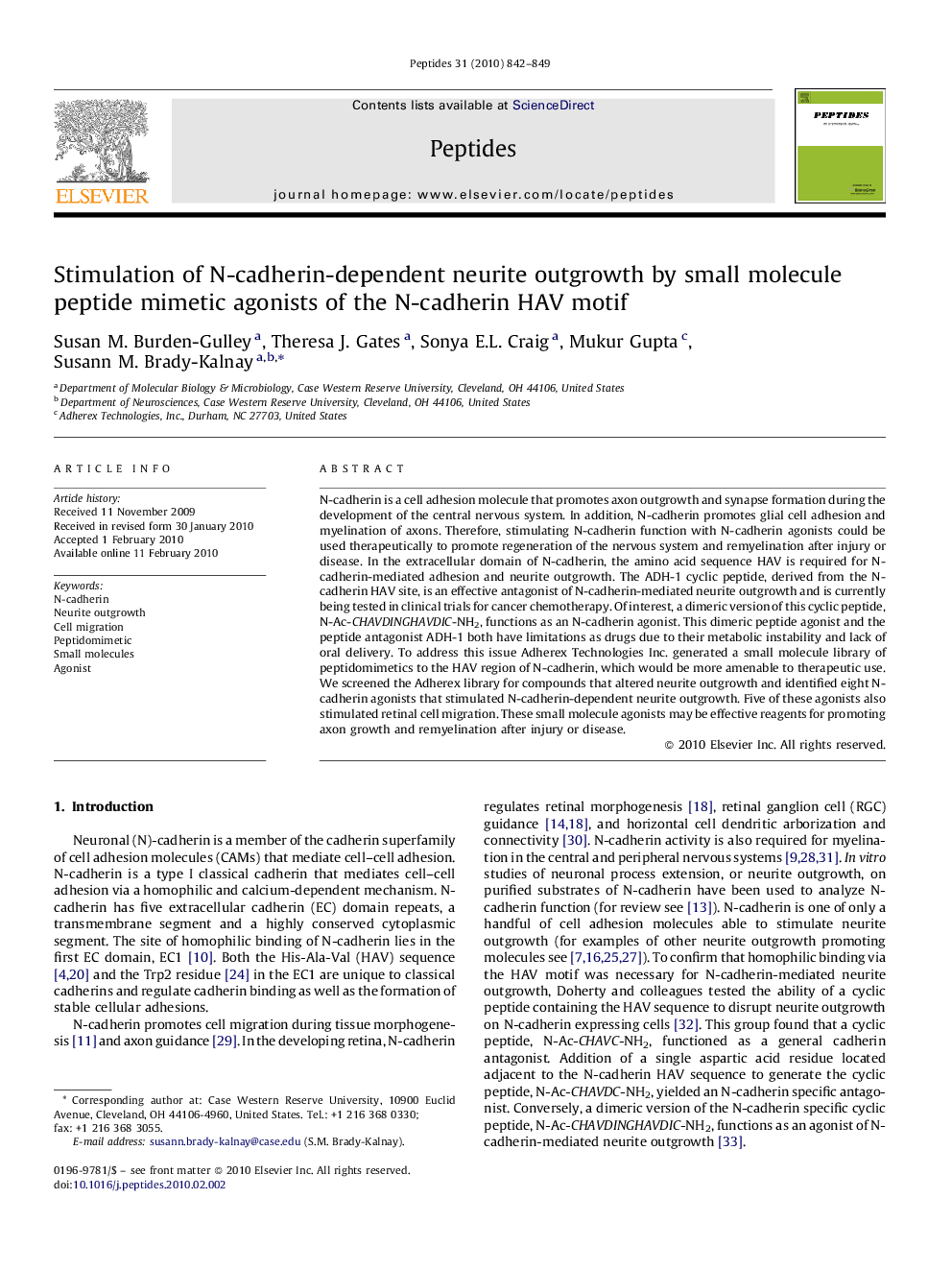| Article ID | Journal | Published Year | Pages | File Type |
|---|---|---|---|---|
| 2006749 | Peptides | 2010 | 8 Pages |
N-cadherin is a cell adhesion molecule that promotes axon outgrowth and synapse formation during the development of the central nervous system. In addition, N-cadherin promotes glial cell adhesion and myelination of axons. Therefore, stimulating N-cadherin function with N-cadherin agonists could be used therapeutically to promote regeneration of the nervous system and remyelination after injury or disease. In the extracellular domain of N-cadherin, the amino acid sequence HAV is required for N-cadherin-mediated adhesion and neurite outgrowth. The ADH-1 cyclic peptide, derived from the N-cadherin HAV site, is an effective antagonist of N-cadherin-mediated neurite outgrowth and is currently being tested in clinical trials for cancer chemotherapy. Of interest, a dimeric version of this cyclic peptide, N-Ac-CHAVDINGHAVDIC-NH2, functions as an N-cadherin agonist. This dimeric peptide agonist and the peptide antagonist ADH-1 both have limitations as drugs due to their metabolic instability and lack of oral delivery. To address this issue Adherex Technologies Inc. generated a small molecule library of peptidomimetics to the HAV region of N-cadherin, which would be more amenable to therapeutic use. We screened the Adherex library for compounds that altered neurite outgrowth and identified eight N-cadherin agonists that stimulated N-cadherin-dependent neurite outgrowth. Five of these agonists also stimulated retinal cell migration. These small molecule agonists may be effective reagents for promoting axon growth and remyelination after injury or disease.
